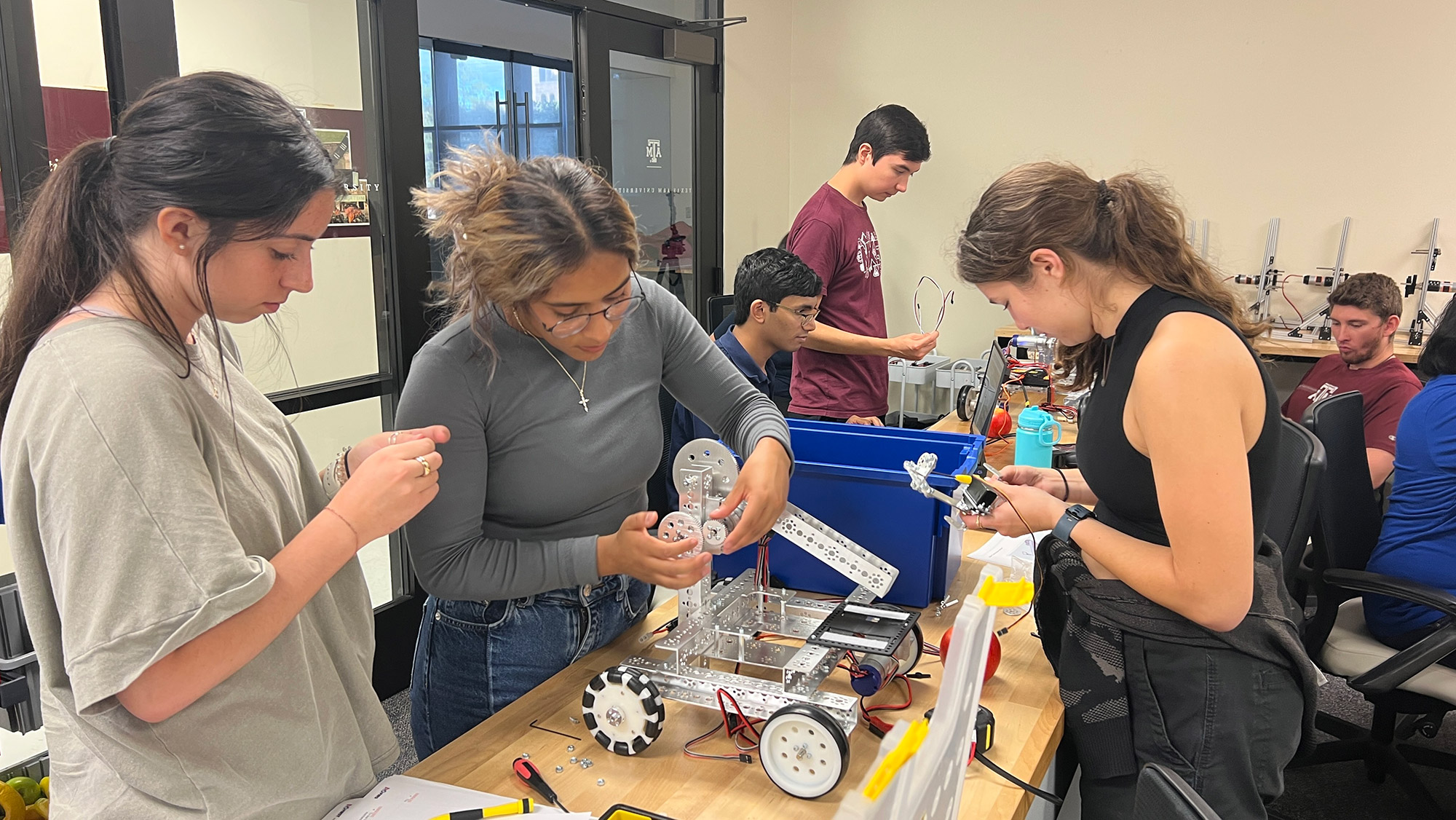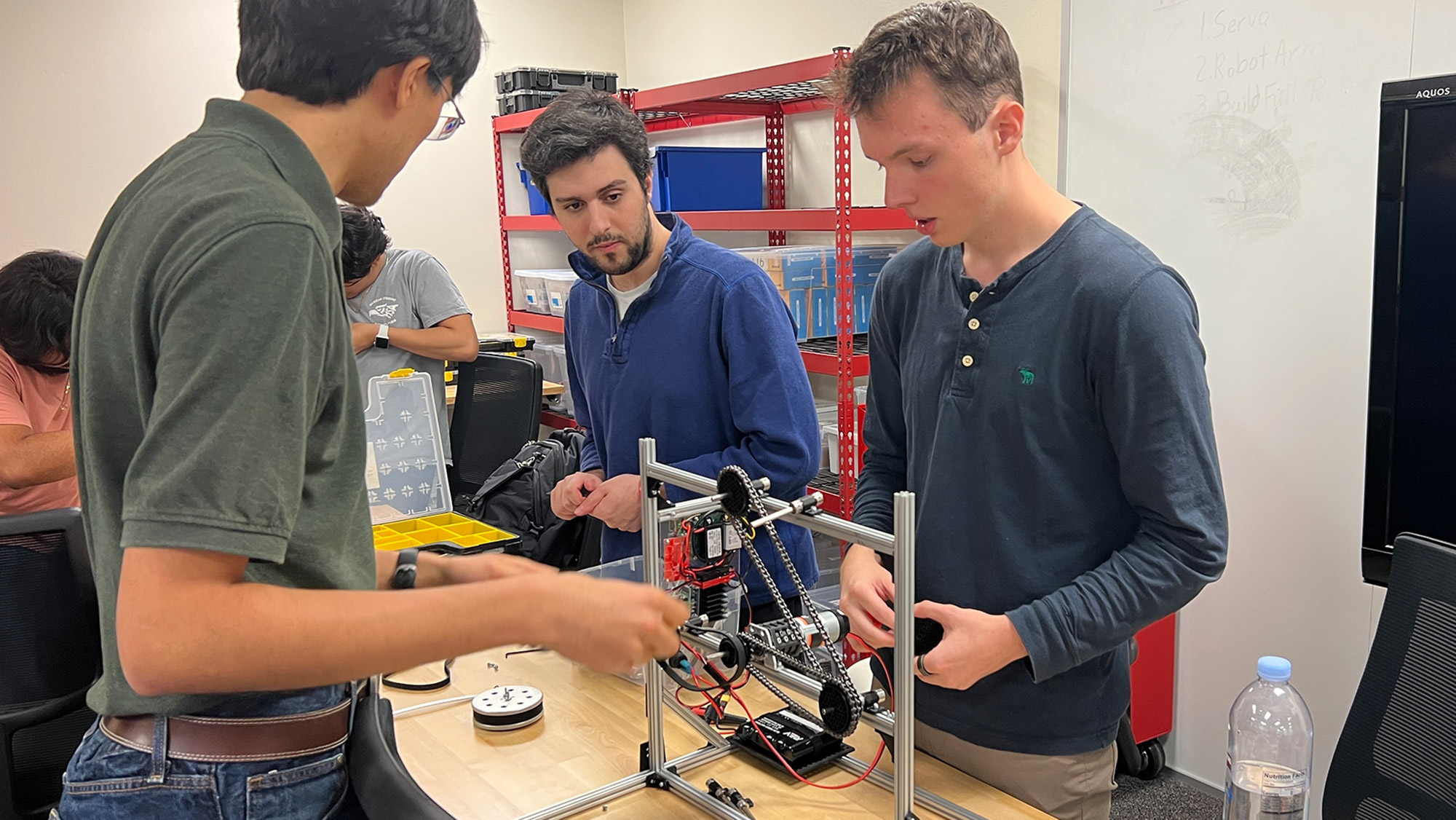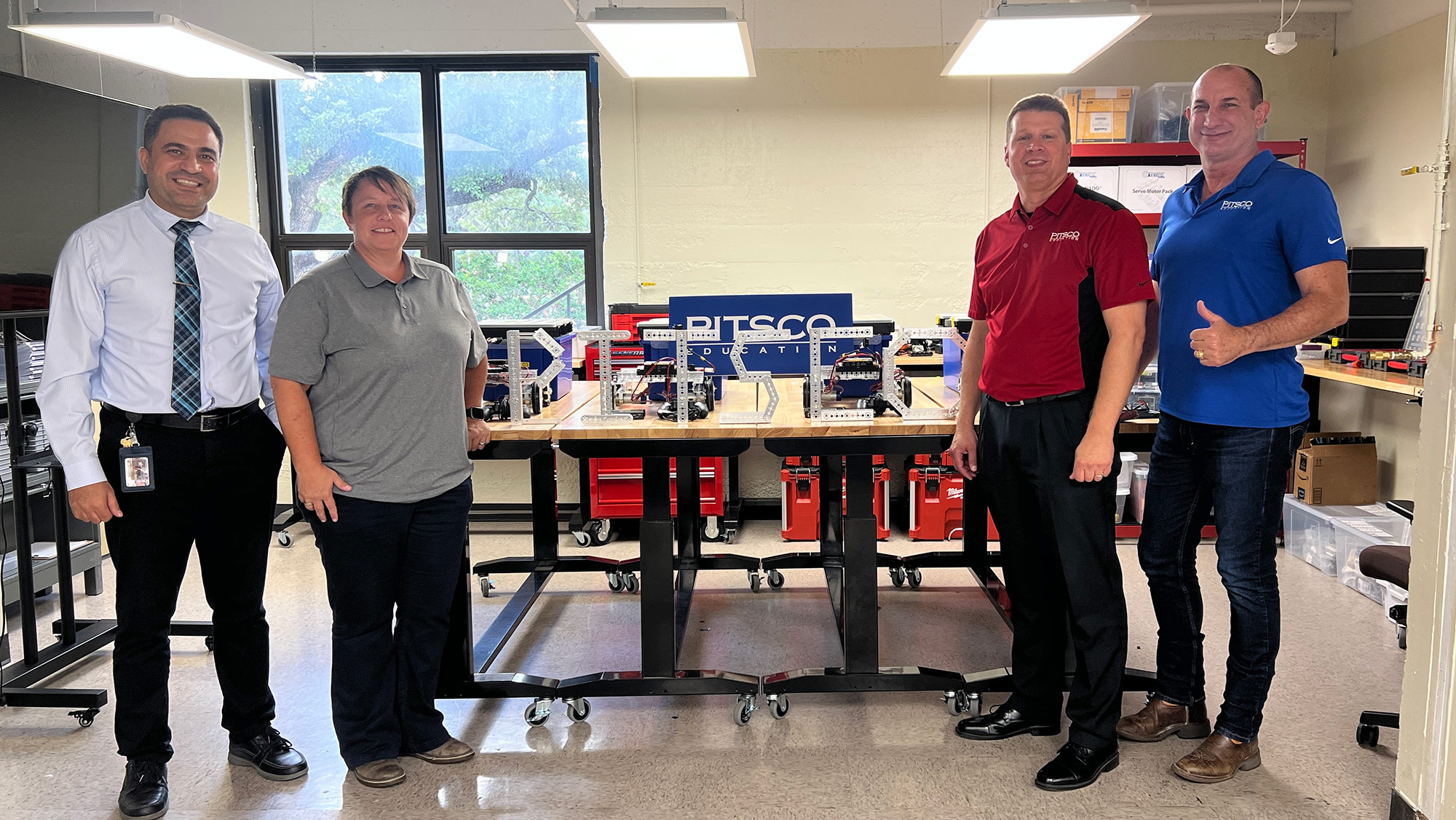
Educators at Texas A&M University are partnering with industry to advance robotics education by enhancing professional development for Texas school teachers and offering new learning opportunities for area students.
The partnership builds on an existing collaboration between the Multidisciplinary Engineering Technology (MXET) program, housed in the Department of Engineering Technology and Industrial Distribution, and Pitsco Education, which creates educational products and curricula. They aim to establish joint academic and outreach activities to advocate for robotics education in Texas. The initiative is led by Dr. Mohamed Gharib, an associate professor and program coordinator for the MXET program.
Gharib will lead a newly developed course offered by the MXET program, robotic systems design, to teach students the foundations of robot construction using a proprietary robotics system provided by Pitsco Education as part of the partnership. The project-based course will expose students to robotic design, fabrication, programming and testing by challenging them to design and build modular robots that can be operated autonomously and remotely.

The collaboration will also conduct joint outreach and teacher professional development activities through a regional training center. This is based on strategic educational enrichment for teachers and students in STEM fields. The center will house newly established certificate programs for K-12 teachers in robotics, drones and programming. It will also prepare the students for university studies in mechatronics by hosting after-school outreach programs and summer camps.
Gharib will review the high school curricula developed by Pitsco Education, suggest modifications and propose the training platform for the topics presented.
“The MXET program is proud of this prestigious partnership with Pitsco Education. We are grateful for their support for the newest course in the MXET program,” said Garib. “Also, this partnership is mutually beneficial and will enrich the teachers’ and students’ experience in Brazos Valley and Texas.”
Matt Frankenbery, vice president of education at Pitsco Education, said he is excited to further deepen the company’s partnership with the MXET program to support robotics education in Texas.

“Dr. Gharib exemplifies the ideal partner, someone dedicated to co-creating innovative solutions that elevate the learning journey,” said Frankenbery. “The ever-evolving realm of coding and robotics demands agility and insight, and it’s collaborations like this that position us at the forefront of the educational technology landscape.”
“As an Aggie who graduated in 1987, I roamed the same Texas A&M labs, where my journey into Technology Education began. Today, as I partake in the exciting partnership between MXET and Pitsco Education, I’m reminded that the possibilities are endless to inspire the new generation of engineering students,” said Joe Olivieri ’87, the education Advisor at Pitsco Education.
The accredited MXET program offers two focus areas: the mechatronics/robotics track and the STEM education track. The students get a Bachelor of Engineering in Engineering Technology degree in both tracks. The mechatronics focus area emphasizes course and laboratory work in mechanics, electronics, embedded intelligence systems, control and communications. The STEM education track prepares students to graduate with their degree while completing coursework that prepares them to become certified in engineering, math and physical science at the secondary education level.